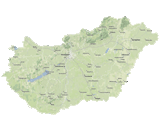| narrowgauge.hu | ||
| History - Transylvania | ||
| ~ Almamellék ~ Balatonfenyves ~ Comandau ~ Csömödér ~ Debrecen, "Zsuzsi" ~ Debrecen, funfair ~ Felcsút ~ Felsőtárkány ~ Gemenc ~ Gyöngyös ~ Hortobágy ~ Kaszó ~ Kemence ~ Királyrét ~ Lillafüred ~ Mesztegnyő ~ Nagycenk ~ Nyíregyháza ~ Pálháza ~ Pécs ~ Szegvár ~ Szilvásvárad ~ Szob-Nagybörzsöny ~ Tiszakécske ~ | ||
| Home |
| Timetables |
| History |
| KBK |
| Gallery |
| Maps |
| Links |
| FAQ |
| Partnereink |
|---|
|
|
The Covasna - Térrét "local interest railway" (HÉV) line was inaugurated in 1892, with a gauge of 760 mm. At the Covasna end of the line, a load transfer point, criss-crossed with standard-gauge and narrow-gauge tracks, was established. Apart from this, run-around facilities were granted only at the upper end of the 5.8-km-long line. The alignment was designed to avoid the village (later town) of Covasna, but at Vajnafalva the tracks pass very charmingly next to the houses before entering the continuously narrowing, beautiful "Valley of Fairies". A 4-track station was built here to serve as a run-around and vehicle transfer point, as this is where the local railway (HÉV) joined the extensive forestry railway network of Comandãu via the gravity operated inclined plane system, which is now a unique industrial monument.
Beérve a faluba.
Fotó: Papucs András (2009.06.26.)
The Transylvanian Forest Industry Co. established its first sawmill in the village of Gyula, which was shortly followed by another one at Comandãu, 6.6 kms away. The centre of the village, and the only real industry to be found here, was the sawmill and the adjoining yards of the forestry railway. The station, which was built for heavy traffic, remains with four tracks up till today. This is where tracks radiated from to the sawmill and the different facilities: engine shed, carriage shops, drasine sidings and also the different lines: the incline to Covasna, the lines to Neruzsa, the Small Basca and Big Basca valleys, etc.
In its heydays, the network was up to 200 kms long. Changing a lot during its history, lines were sometimes built and sometimes abandoned.
The inclined plane is also a product of the great engineering methods of the 19th century. Mr. Dávid Horn started the construction of the incline but after a change in ownership, the Groedel family were the ones to complete it. The Groedels founded the Transylvanian Forest Inductry Company, which appointed Mr. Emil Lux to design the inclined plane connecting the Covasna and Comandãu railways.
This system is today the sole surviving example of the gravity operated, self-acting inclined plane system, which means that the descending laden wagons pull up the empty ones by their weight. The technical features of the incline are special even today. The railway can theoretically be split into two halves: the upper and the lower part, which are divided from each other by the intermediate station. The upper half has three rails, the middle one being used by both carriages, but from different sides. The lower section is a conventional, two rail track. At this end of the intermediate station a switch is operated by the staff. At the upper end of the station, however, the two inner rails join each other and create a gauntleted track, where the middle rail serves as the inner rail for both lines, the wheels using the respective sides of the rail. The upper terminal of the incline gives place to the braking mechanism housed in a wooden shelter, and the both roll-on tracks.
The most important reasons for closing the line were the following:
The gradual decline of the railway started with the closure (1969 to 1974) of the lines in the Small Basca and the Big Basca valleys leading to Nehoiu, due to flooding damage and also the big-time increase in motorisation. By 1991, the part of the network leading south from Comandãu, towards Gyula, was abandoned as well.
After the changes in the political system, most of the forests were privatised and the new owners started transporting wood by trucks. From large parts of the area such as the Small Basca valley, the wood is transported to the other side of the Carpathians, and not to Comandãu.
In 1995, extensive damage was caused by high winds felling the trees. As a result of restrictions that were introduced on further felling until the regeneration of the forests, production of only 50.000 cubic metres are now allowed instead of the previous 180.000 cubic metres. Of this, just 10.000 cubic metres are transported to the sawmill in Comandãu.
In 1996, the forests in the Valley of Fairies set fire. Also destroyed was the incline. However, with a decisive step, the retired and active workers and supporters of the railway line rebuilt the the incline.
In October 1999, the sawmill in Comandãu was closed and the workers were fired. Thus, unemployment in the village rose to 90%. The last working day of the railway was also in October 1999.
Reasons For Stopping Traffic On The Line
The inclined plane
Legutóbbi módosítás: |
| Kereső |
|---|
| Képtár |
|---|
|
|
| Vasútkereső |
|---|
 |
Belépés - Webmail - Intranet - FAV - EgyesületOnline



